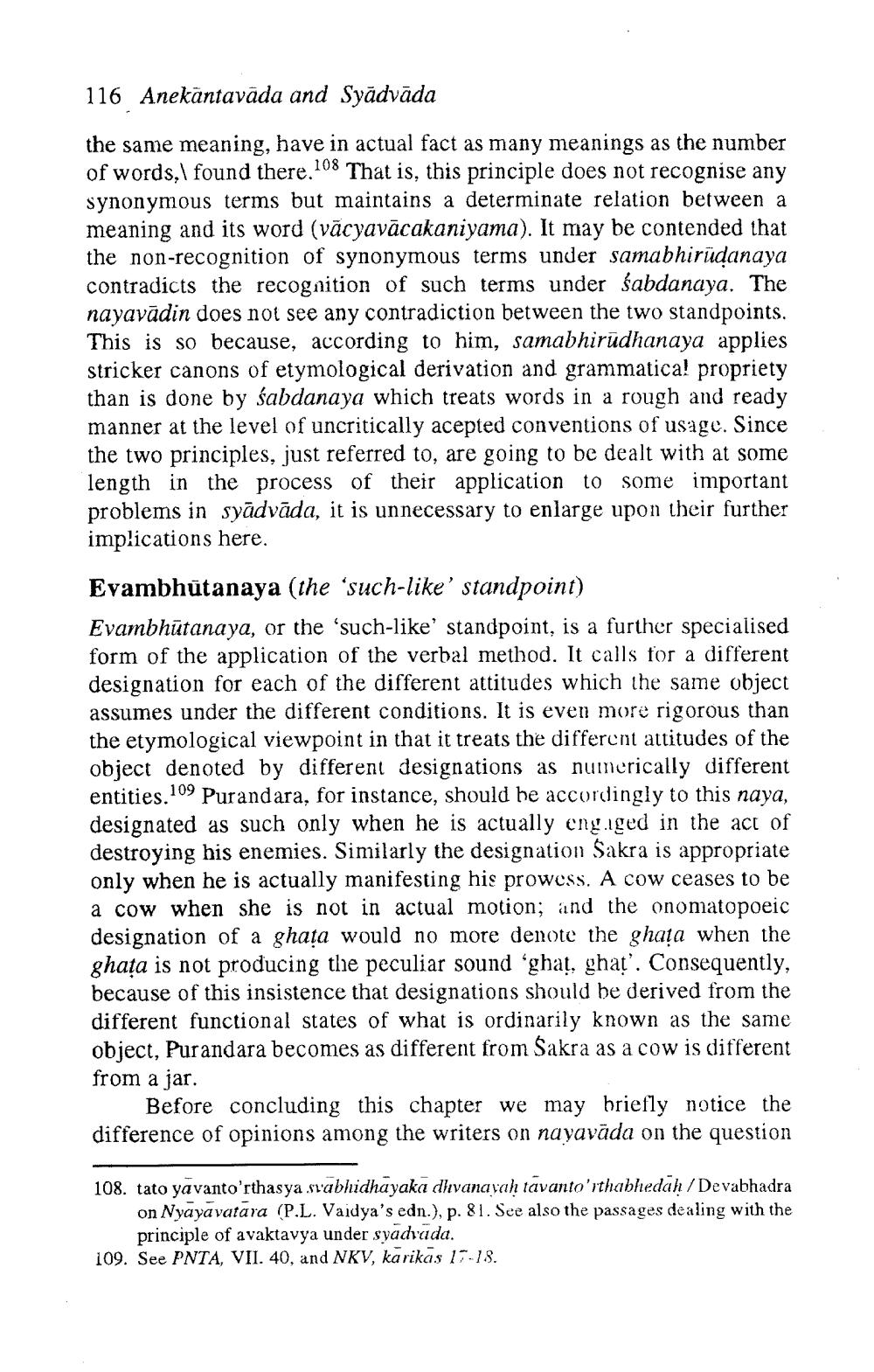________________
116 Anekāntavāda and Syādvāda
the same meaning, have in actual fact as many meanings as the number of words, I found there. 108 That is, this principle does not recognise any synonymous terms but maintains a determinate relation between a meaning and its word (vācyavācakaniyama). It may be contended that the non-recognition of synonymous terms under samabhirudanaya contradicts the recognition of such terms under sabdanaya. The nayavādin does not see any contradiction between the two standpoints This is so because, according to him, samabhirūdhanaya applies stricker canons of etymological derivation and grammatical propriety than is done by śabdanaya which treats words in a rough and ready manner at the level of uncritically acepted conventions of usage. Since the two principles, just referred to, are going to be dealt with at some length in the process of their application to some important problems in syādvāda, it is unnecessary to enlarge upon their further implications here.
Evambhūtanaya (the 'such-like' standpoint) Evambhūtanaya, or the 'such-like' standpoint, is a further specialised form of the application of the verbal method. It calls for a different designation for each of the different attitudes which the same object assumes under the different conditions. It is even more rigorous than the etymological viewpoint in that it treats the different attitudes of the object denoted by different designations as numerically different entities. 109 Purandara, for instance, should he accordingly to this naya, designated as such only when he is actually engiged in the act of destroying bis enemies. Similarly the designation Sakra is appropriate only when he is actually manifesting his prowess. A cow ceases to be a cow when she is not in actual motion; and the onomatopoeic designation of a ghața would no more denote the ghata when the ghața is not producing the peculiar sound 'ghat, ghať. Consequently, because of this insistence that designations should be derived from the different functional states of what is ordinarily known as the same object, Purandara becomes as different from Sakra as a cow is diffe from a jar.
Before concluding this chapter we may briefly notice the difference of opinions among the writers on nayavāda on the question
108. tato yavanto'rthasya siabhidhayaka dhvanayah tavanto'rthabhedah/Devabhadra
on Nyayavatara (P.L. Vaidya's edn.), p. 81. See also the passages dealing with the
principle of avaktavya under syadrada. 109. See PNTA, VII. 40, and NKV, karikas 17-18.




